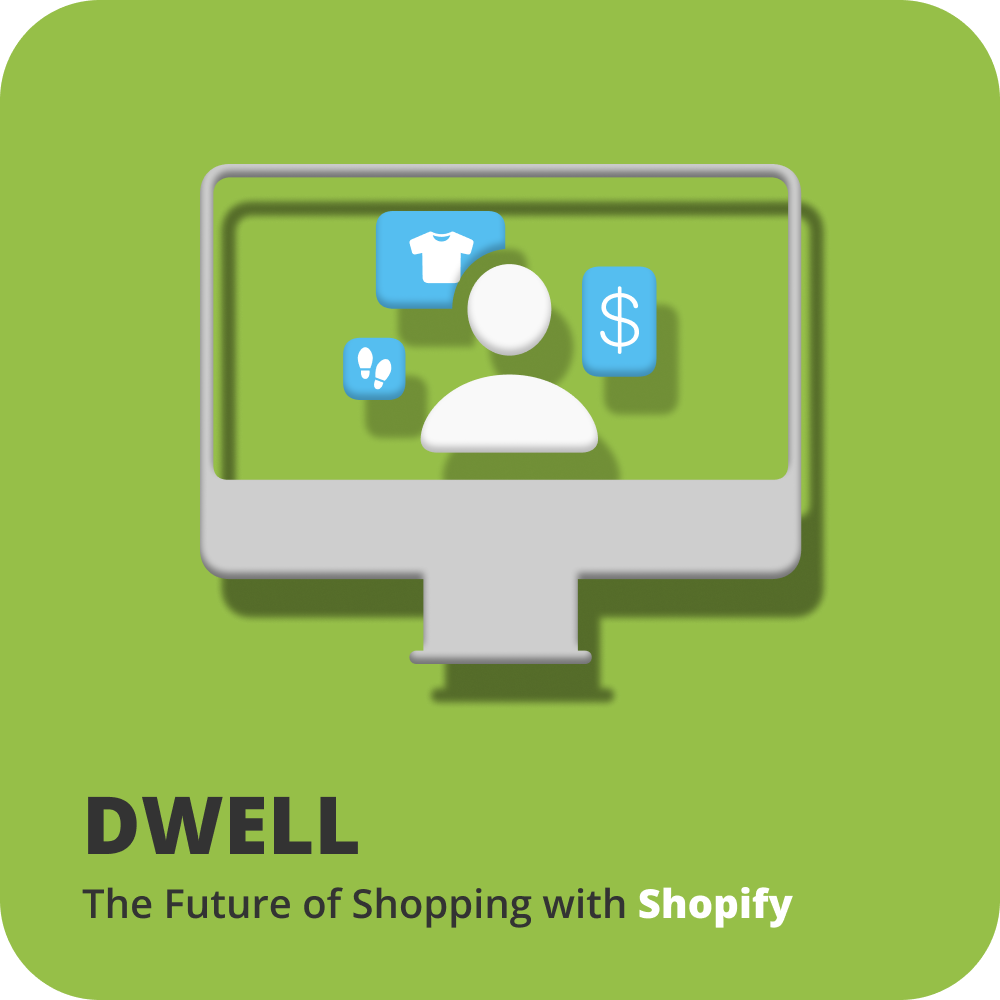ARTIFICIALLY
INTELLIGENT
WORKPLACE
A look into the automation of the workforce, the benefits and disadvantages of it and what the future holds.
Special thanks to Dr. Christopher Mole for the careful supervision and brilliant advice and UBC for the opportunity.
Artificial Intelligence, or AI, is a popularized term referring to a computer system that replace the role of a human agent. With the recent boom of smartphones and other “smart” technology, AI is now seemingly omnipresent and fully integrated into our lives. However, we often only recognize AI when it appears in commercial products – from streaming services that recommend movies based on our viewing history to maps that show our fastest routes home; these applications, in reality, represent a limited scope of AI’s full utility. The true definition of AI is any agent that observes an environment and reacts to it by taking action to achieve intended goals. Examples of AI that fulfill this definition have existed for decades; often present in places to reduce human labour. They include machines such as ATM’s and grocery self-check-outs - both applications observe the environment (i.e. customers) and respond by fulfilling intended goals (i.e. transactions). Both applications also demonstrate that banking and business can be conducted autonomously with little-to-no physical staff required – and have done so for many years. To understand AI under this broader definition is important as it helps us identify all aspects of its use, allowing for a thorough evaluation of its benefits and, more importantly, its drawbacks.
When we evaluate AI by its true definition, we see that it is transforming the workforce, shattering our traditional sense of the workplace. The implementation of AI comes with many benefits, such as efficiency, practicality, and reduced operational costs. And therefore many companies are reaping these benefits by replacing trained professionals with computer systems. Canadian bank Tangerine does not have any in-person branches, and simply operates via online or telephone banking. Amazon-developed grocery store, Amazon GO, allows customers to purchase products without interacting with a single human, but rather with hundreds of cameras and sensors that monitor their purchase. Both of these examples demonstrate that, with AI, little-to-no physical staff are required for businesses to operate. The introduction of AI results in both less workers needed and less hours per worker needed. However, what happens to the professionals that AI replaces? What are the consequences of allowing machines and computer systems into the workplace? In the following paper, I examine the ethical implications of such transformation. By evaluating the specific benefits and drawbacks of artificial intelligence, I argue that not only is it safe for humans to implement AI into the workplace, it is essential for the evolution of humankind. However, I also draw attention to what is required of employers and stakeholders to ensure that this transformation is done ethically – which may ultimately require a concomitant transformation of governmental policies. Superintelligence by Nick Bostrom will be cited throughout.
The implementation of AI into the workplace has multiple upsides. First, by using such machines, businesses can reduce the cost of labour, allowing for goods and services to be sold at a cheaper price. We have seen this before. With the introduction of mechanized looms during the industrial revolution, the clothing manufacturing became cheaper and more accessible. Predictably, textile weavers and expert tailors saw a significant decline in business and eventually became redundant. However, the clothing industry did not collapse and hand-made clothing did not become extinct. Today, the clothing industry is worth an estimated $1.5 trillion USD (Statista, 2020) and continues to grow. By having the cost of labour reduced on everyday products, consumers have more access to a greater variety of products that might not have been accessible previously. Furthermore, the goods crafted by hand are considered a luxury and demand steep premiums over their mass-produced counterparts. Bespoke suits made by tailors with generations of experience can cost upwards of $10,000. Bostrom suggests that if machine-alternatives were made in a sufficiently superior manner, then perhaps they would be considered a luxury as well, and more highly prized (Bostrom, 195). While the worry of loss of employment is completely valid, reports from the US Bureau of Labour Statistics show that more jobs are actually created when technology replaces labour. For instance, from March 2000 to February 2020, the unemployment rate in the United States dropped 0.5% (4% to 3.5%) [Bureau of Labour Statistics, 2020], while also having a population increase of 17.5% (United Nations, 2020). These data showcase that while one specific sector in one specific area may incur a loss in employment opportunities, the overall employment will continue to grow in relation to population growth and inevitable needs. This is shown in the overall trend from previous industrial revolutions in which jobs are created with the surge of new technology introduced, thus it is reasonable to assume this will be the case with the next revolution.
The second benefit resulting in the implementation of AI is increased efficiency and safety of the human workforce. For sectors with rates of mortality and morbidity, such as the oil and gas industry, automation can be used to improve safety and replace humans in often dangerous situations. Automation can also streamline supply chains, spare parts management, workforce deployment and numerous organizational inefficiencies (NSEnergy, 2019). The Syama mine in Mali, for example, is the first fully autonomous mine which, once fully operational, has been shown to cut the cost of mining by 30% and reduce workplace injury such as traumatic hazards, ergonomic hazards and noise (Mining Technology, 2018 & A. M. Donoghue, 2004). By switching to autonomous machines, the mine also has significantly reduced emissions from the electrically operated machines, which in turn provides a safer work environment for human labour if it were needed. Speed is also increased significantly, since no “handovers” are required between two workers, and machines can now run for 22 hours a day, rather than 16 hours previously (Mining Technology, 2018). The aspect of reduced human-labour is prevalent, but considering that mines are notoriously dangerous worksites, and commonly in remote areas, the implementation of autonomous machinery in mines allows human-labour to focus on logistical aspects above ground and may increase training opportunities for the surrounding people. The use of innovative technology allows technical jobs such as mining to be taught to local workers, rather than employing expatriate mining engineers. Finally, we must also consider how AI is changing the workplace during the current pandemic; reduced physical contact means decreased transmission rates, another unexpected health benefit from this transformation.
The third benefit would help the business owners significantly, as it pertains to the feasibility of swapping out intelligent machines to suit specific tasks. Training is an expensive aspect of certain jobs, but it does allow the person in question to provide labour and services that they are experts in. The latest problem with this approach is that while they become incredibly qualified with the training they receive, it only pertains to the field in which they were trained. For humans, specialization can become an unintended issue. Having employees undergo years of training in a specific field means that these individuals will have difficulty finding jobs in other sectors . Of course, retraining is always an option, albeit an unlikely one. The use of intelligent machines in certain fields allows the companies to use AI in very specified tasks that would otherwise require years of training. Workers, in turn, would have the opportunity to retrain and become familiarized with a broad range of sectors, increasing their employability.
Although the implementation of an intelligent machine in the workplace has a multitude of benefits, the glaring issue is ultimately the reduction of labour in every scenario. From a cost perspective, it is an excellent idea. Reduce, or entirely eliminate, labour to reduce overall costs increases profits. However, worker displacement is not always the case with the implementation of AI into the workplace. For example, ATMs did not replace the jobs of bank tellers, rather they provided another service to the institutions clients as a 24/7 banking machine. The employment of bank tellers actually increased with the implementation of ATMs -the use of ATMs meant banks acquired more profit, resulting in an uptick of bank branches (thus an increase of bank tellers) [James Bessen, 2015].
Where the issue of labour displacement begins to arise is when AI replaces the pre-existing workforce wholesale, preventing any reconfiguration or retraining of the work environment. For example, Sobeys, a Canadian grocery chain who serves customers via stores such as Safeway, IGA, and Thrifty Foods, employs 125,000 people (Sobeys, 2020). If Sobeys decide to transition to an entirely automated system throughout the company, it raises key questions; without the need to pay for labour, will the cost of goods reflect this, and, if this is not the case, is Sobeys entitled to all the profits they receive from this transition? Hypothetically, if every single employee was laid off, and assuming they were all originally paid for 50 weeks at 40 hours per week (on BC’s $14.60 minimum wage), Sobeys would save $3.65 billion every year, minus the upfront cost of installation of the machines. If Walmart were to do the same with their global stores (using the same calculations), they would pocket $64.25 billion (Walmart, 2020). Not only do these brands represent a large group of employees that would inevitably lose their jobs, they would substantially increase profit margins. If brands were to decrease the price of goods, it would create a market frenzy leading to competitors who have not yet transitioned to an autonomous model to either go bankrupt or be forced to follow suit, leading to more loss of employment. The unemployed would still stay unemployed, and corporations would become undeniably enormous in wealth. When the unemployed lose the ability to pay for goods and services, a disruption of the labour cycle begins and would ultimately end with social collapse.
This key issue leads to the inevitable discussion surrounding the distribution of wealth. How would the enormous growth of income from capital caused by the implementation of intelligent machines be distributed among a society in which labour is no longer desired (Bostrom, 197). Typically, the wealth would be distributed depending on capital owned. When the current generation of workers are no longer available to work, they lose the ability to acquire capital. Thus, only the wealthy will have access to this financial privilege. Wealth acquires more wealth – the rich will get richer and the poor will get poorer. To prevent this looming inequality from happening with AI, the needed solution would be the implementation of taxes onto large corporations and redistribute the money among those impacted by such drastic change. Daniel Susskind, an AI economist from Oxford, drafted such taxation scheme, which involves taxing the number of machines that have replaced human skills and labour, and then distributing the money back to the replaced people. By doing so, corporations do not get to pocket the money that would have otherwise been saved with AI. Furthermore, the amount of tax would be correlated with the number of intelligent machines implemented. While not a perfect solution, the outcome is far better than having a drastic spike in poverty rates and allows society to adapt at a more reasonable pace to the implementation of AI into the workplace.
Providing citizens that are less well off with a basic income to compensate for the loss of employment may also be a viable solution. The concept of universal basic income (UBI) is quite similar to government regulated pre-existing financial assistance programs, such as pensions and welfare. Where UBI differs is that since GDP will predictably surge following an intelligence explosion (i.e. AI use) (Bostrom, 197), this surge of GDP would then be distributed among citizens who would have been impacted by such change. The introduction of a UBI would overhaul the previously broken welfare system; broken because it is bound by tax status and restricted use and acts more as a parental allowance than income supplementation. Andrew Yang, a 2020 American Democratic Presidential candidate, sees AI as an inevitable outcome in the future of employment, and heavily advocates for UBI (as he calls it, “Freedom Dividend”) to create an effective buffer for automation-linked job loss that looms ahead (Futurism, 2020). In fact, a 2017 report by McKinsey & Company argued that nearly 1/3 of American jobs will disappear due to automation by 2030. The importance Yang reiterates is that our society needs to be prepared for the inevitable, thus implementing a form of UBI gives everyone a fighting chance for what’s to come.
A tangible example I would like to delve deeper into, which explores the issues and benefits aforementioned, is the automation of the US trucking industry. It is an industry that employs nearly one million Americans (New York Times, 2018). With the rapid rise of technology, trucking, in particular, is ripe for the picking by AI. Since semi-autonomous driving is already commercially available on multiple automobiles, it is no surprise for this technology to transition into semi-trucks as well. Tesla announced a fully electric semi-autonomous semi-truck due to be released in 2021. This technology will not only revolutionizes the industry by becoming electric (which saves on fuel costs significantly), it will also enable a feature previously deemed impossible – self-driving trucks or, as Tesla calls it, “Autopilot”. Not only does this feature reduce the mental strain of driving in repetitive or long journeys, it provides a safety net to those using it. In Q1 of 2020, Tesla reported one accident for every 4.68 million miles driven in which drivers had Autopilot engaged (Tesla, 2020). In comparison, the National Highway Traffic Safety Administration in the US estimates one accident for every 479,000 miles (NHTSA, 2018). This technology has the statistical backing to declare it “safer” than human-operated driving, therefore the application of such technology is obvious in an industry such as trucking, even more so when the statistics showing the injuries caused by trucking are so alarming; “A total of 4,136 people died in large truck crashes [in the US] in 2018. Sixteen percent of these deaths were truck occupants, 67 percent were occupants of cars and other passenger vehicles, and 15 percent were pedestrians, bicyclists or motorcyclists” (IIHS, 2019). Autopilot-like technology will significantly reduce the amount of accidents caused by truckers and reduce injuries to the drivers and other drivers and pedestrians. Ethically, “Autopilot” will also drastically increase the quality of life for truckers, as the most dangerous part of the job is removed, and the truckers can feasibly transition their skillset to other aspects of the job, such as maintenance, logistics, and long-haul jobs that require non-electric trucks. The elimination of the truck drivers driving trucks will reduce the injuries towards all parties to virtually zero.
The definition of ethical, which states “avoiding activities or organizations that do harm to people or the environment”, fits perfectly in this sense. Following this definition, I must point out the perhaps now- autonomous elephant in the room, loss of employment is a certainty. As such UBI may be necessary to account for the loss of employment due to automation. Remember, the transition to automation also means reduction in labour costs, which corporations will need to be held accountable for; profiting off the free labour of machines will hopefully be a thoroughly regulated aspect of a government’s responsibility to the people. Second, job loss in a society is typically a temporary drop in the long running gain of societal employment. Trucking jobs will be reduced, but technical jobs needed to sustain the automation of trucks may have the possibility of introducing more jobs resulting from the advanced technology required to support it. The clear downside of such an eventuality (unemployment) pales in comparison to the benefits it provides. Not only will it reduce accidents caused by and to truckers, it will substantially increase the efficiency of the industry by providing non- stop usage without the impact of driver fatigue. As with almost every industry automation will inevitably impact, the downside will always be a reduction of labour. It is up to government agencies to support and regulate the activities carried out by corporations conducting in autonomous business. The benefits of the implementation cascade throughout our society, benefits such as increased quality of life, reduced risk involved in labour, and sheer technological advancements are compelling reasons to support such a change.
The introduction of such ideas requires great support from governments in two significant ways. The first entails that businesses are still allowed to thrive and contribute goods and services to the people, while also stimulating the economy by paying corporate taxes. The other involves a support system for the population affected by the switch to autonomous machines in the workforce, such as an initiation of UBI. Issues may arise from these two pathways because they involve different moral principles from the government. The former suggests a capitalistic approach to society, in which an economic system operates on the basis of profit and market exchange and in which the major means of production and distribution are in private hands. While this approach is not necessarily supported by everyone, it is indisputable that capitalism spurs economic growth, consumer choice, and economic freedom. The latter suggests a socialist approach to society, where social welfare is crucial and involves a planned economy via government intervention. The introduction of automation in the workforce, and the effects that occur because of it, will put both schools of thought to the test that has never been seen before. On one hand, allowing business to pursue automation will give them the means to acquire more wealth than ever before, but at the expense of quality of life for the workforce. On the other hand, active government regulation in business activity and heavy taxation will provide the groundwork for UBI and other essential public services that would otherwise be unavailable, at the expense of stunted economic growth and reduced technological innovation. One could argue that a mix between the two is not just recommended but necessary for the continuation of society. Without government involvement, corporations will become immensely wealthy and powerful. Without economic freedom, corporations will have little incentive to pursue innovation. The society we live in today was built on capitalistic principles but will need to encompass socialistic ideals in order to grow further.
While it is becoming clear that the future of society caused by the implementation of intelligent machines is unpredictable, immense support from many avenues including government agencies, corporations, and even the people themselves in order to get any form of progress is required. To reiterate, the ethical benefits of moving to an autonomous workplace model outweighs the ethical detriments. It is safer and more efficient. By allowing the collaboration between governments and corporations to thrive, the quality of life for society’s citizens would improve with the implementation of UBI and increased funding for public services, while also decreasing dangers associated with labour in the workplace. The automation of the workforce is happening; thus, it is crucial for society to have the means to support it; not just for the people of today, but for the children of tomorrow.
Portfolio

The Journey of ImperfectionA Study of Dermatology in BC

CliffordUX Case Study

Data WalletData Privacy Exploration

AlfreshDesign Sprint targeting Food Waste

DwellDesign Sprint with Shopify

#OwnYourDataThesis Preparation

F(AR)MRevolutionary

Welcome to Vancouver (Budd-E)New to the City?
made with 
